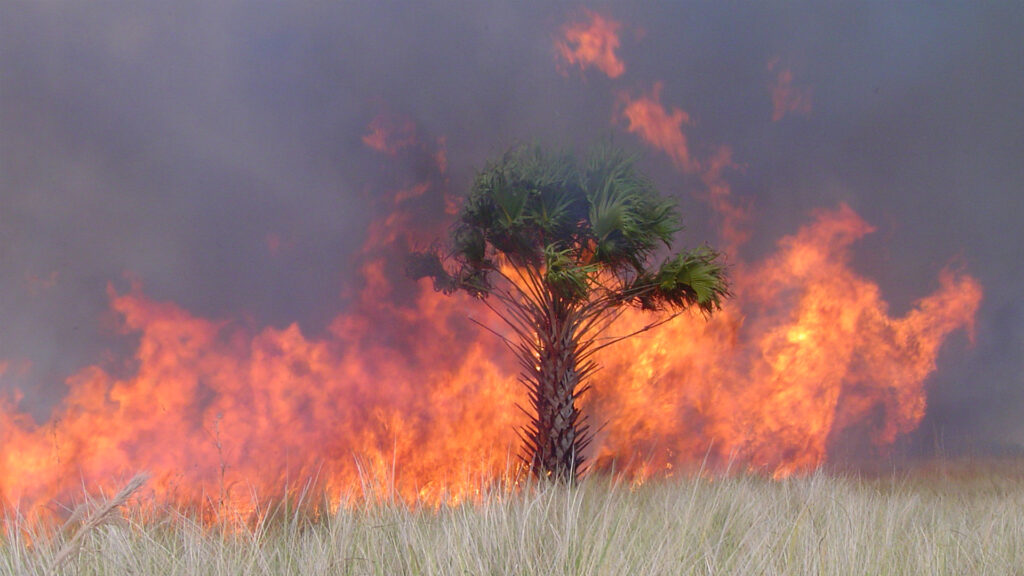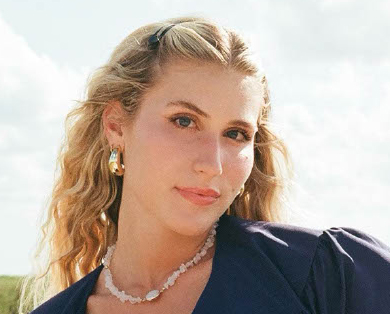By Bella Kubach, Citizens’ Climate Lobby
With drought conditions persisting, Florida has experienced more than 1,300 wildfires so far this year, scorching over 57,000 acres of land, according to the Florida Forest Service.
But the danger is far from subsiding. In fact, some cooler temperatures are expected to arrive this week, bringing strong winds and even drier air – the perfect condition for flames to spread.
So far, I have been fortunate not to experience fires close to home, here in Boca Raton, but that doesn’t mean I am complacent – as drought conditions worsen and there’s no forecast of rain in sight, I am acutely aware that things could change at any moment.

According to the Florida Department of Emergency Management, dry conditions and sunny skies only elevate wildfire conditions by creating fire fuel from dried-out vegetation. And the debris from hurricanes Helene and Milton only adds more fuel to the fires as our hardest-hit areas in south and southwest Florida endure parched conditions.
Concerningly, this isn’t just an unlucky weather pattern. It’s climate change in action.
Growing up in Boca Raton, wildfire season was never something that I feared. Hurricanes were always on the radar, but the fires we’ve seen sweep the state recently were nothing I ever expected. Staggeringly, wildfires have scorched more than 57,000 acres of Florida land this year alone.
Wildfires don’t just destroy forests – they threaten homes, strain emergency services, put firefighters at risk and fill the air with smoke that endangers public health.
These devastating fires can no longer be looked at as just freak incidents or acts of carelessness. We also must consider how our changing climate is creating conditions that exacerbate and strengthen them, putting us all at increased risk.
There is scientific consensus that our climate is overheating because of our propensity for burning fossil fuels, which release heat-trapping pollution into the atmosphere. Warmer air holds more moisture, pulling it from soil and vegetation, turning landscapes into dry fuel waiting to ignite. And South Florida is no longer safe from this threat.
Last month, Palm Beach County issued two red flag warnings due to threatening windy, dry conditions. This number is alarming considering Palm Beach County has only issued five red flag warnings since 2020.
In the Sunshine State, we’ve always been vulnerable to extreme weather, but the difference now is frequency – and intensity. Warmer winters, prolonged dry spells and higher overall temperatures are turning our landscapes into matchboxes. And the risk is growing that our favorite places may fall victim to the flames.

As smoke signals rise across the state, it’s time we stop treating wildfires as distant disasters and start seeing them as the warning signs they really are.
Florida is defined by its landscapes – its wetlands, pine flatwoods and sawgrass prairies. But with each fire, we edge closer to losing the very environments that make Florida our home.
If we want to preserve the Florida we love, and protect the safety of its residents, we need leadership that’s willing to confront the facts. That means Sens. Rick Scott and Ashley Moody must support serious, science-based solutions to solve climate change.
This is not about politics – but about protecting the people and places we care about.
As flames spread, the stakes only rise – let’s protect Florida from being caught in the crosshairs.
Bella Kubach is a communications intern for Citizens’ Climate Lobby, a nonprofit, grassroots climate advocacy organization, and is currently studying for a master of arts in global sustainability at the University of South Florida. Banner photo: A wildfire at Florida Panther National Wildlife Refuge (U.S. Fish and Wildlife Service Southeast Region, Public domain, via Wikimedia Commons).
Sign up for The Invading Sea newsletter by visiting here. To support The Invading Sea, click here to make a donation. If you are interested in submitting an opinion piece to The Invading Sea, email Editor Nathan Crabbe at ncrabbe@fau.edu.



